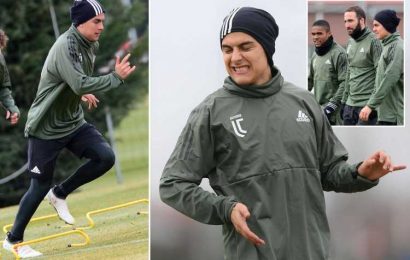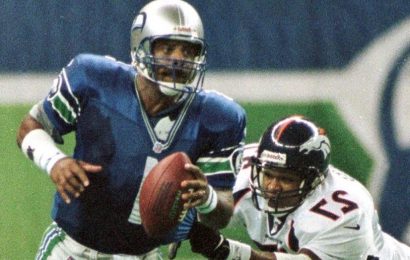“Pod” is not a golf word. And yet it has been on the tongue of nearly everyone in the golf community during the last, tense days before this week’s Ryder Cup, the biennial, pressure-packed team competition between American and European pro golfers that begins Friday.
Paul Azinger, the American Ryder Cup captain in 2008 and a former PGA Tour pro, deserves the credit, or the blame, for injecting “pod” into the golf vernacular. Thirteen years ago, after learning that Navy SEAL units bonded by training and living together in small, carefully selected platoons, Azinger decided he would divide his 12-man team into three four-man units before that year’s Ryder Cup. The hope was that a finite, close-knit group could match the unity exhibited by Europe’s triumphant teams.
Called the pod system, Azinger’s four-man corps were chosen after each player took a personality test. Grouped together based on compatibility, the players did almost everything together before the Ryder Cup matches — practice rounds, meals, nightly table tennis games. When the competition started, they were paired together in matches and routed the Europeans to claim the first U.S. victory in nine years and just the second since 1993. Azinger was celebrated for his innovation.
But in a show of the stubborn individualism that may be hampering the overall American Ryder Cup effort, the U.S. captains who succeeded Azinger rejected or diluted his approach. Only one of those teams won, in 2016, when Davis Love III embraced the pod system.
At other team competitions in professional golf, including the Solheim Cup, which pits women’s golfers from the United States against those from Europe, leaders chose to adopt Azinger’s model with success and failure. Last month, the American Solheim Cup captain, Pat Hurst, implemented the pod system and her team lost, 15-13.
Even Azinger, now an analyst for NBC, which will broadcast the three days of Ryder Cup matches from Friday to Sunday, has questioned the current efficacy of his idea.
“The way I did it wouldn’t even work today, to be honest, even though the concept was good,” he said last week. “I just think the pods, they don’t work all the time. We keep getting beat. If everybody’s still using the pods, pods isn’t the answer. It’s something bigger than that.”
The pod debate has not stopped or impeded the discussion about the best way to replicate Azinger’s success on the American side. In the run-up to the event, the overarching intrigue is how Steve Stricker, this year’s U.S. captain, will make up the two-man partnerships he sends out for the 16 matches against Europe’s two-man teams on Friday and Saturday. (On Sunday, the Ryder Cup concludes with 12 one-on-one singles matches.)
The American hand-wringing about their player pairings has generally been a source of quiet amusement for the European squad. Devising the pairings on their team is rarely controversial or the product of profound, multilayered planning. Players often form natural partnerships based on which European country they represent.
“The Europeans are bonded by blood, which means everything to them,” Azinger said. “The Spaniards play together. The Englishmen, the Irishmen, the Swedes, they’re bonded by something that really gives them a full-blown 1 percent advantage.”
Azinger said a 1 percent advantage may not seem like much, but in the three days of a Ryder Cup competition, more than 4,000 shots are likely to be put in play. A 40-stroke swing, or 1 percent, could conceivably decide a couple of matches, where one point is awarded for each victory and half a point for a tie. Europe has won nine of the last 12 Ryder Cups, but on four occasions the margin of victory was a single point.
Seizing on that 1 percent edge, Azinger said of the Europeans: “They bring an intangible with them. It’s a fact.”
Outside the golf world, there may be some precedent to explain how the European team’s geographic makeup improves its Ryder Cup results.
Some of the strongest, most effective troops during World War II were soldiers assembled from the same town or village, according to Charline Russo, a senior lecturer in organizational dynamics at the University of Pennsylvania and a consultant on executive coaching and team development.
“It wasn’t just because they grew up together, there was also that accountability factor,” Russo said. “You didn’t want to go home and admit that you screwed up.”
Russo, who has a Ph.D. in organizational leadership, has a deep familiarity with the personality tests that Azinger used 13 years ago. Stricker, who was on the 2008 team, last week conceded that he would employ a variety of tactics to devise his pairings, although he declined to be specific on whether he would use the pod system. Russo said the assessments could be valuable tools, but cautioned, “You need somebody who knows what they’re doing with it because these things can be dangerous.” Azinger, for example, consulted at length with a clinical psychologist.
Moreover, Russo, who worked for pharmaceutical and biotech companies and assembled teams for large-scale initiatives, insisted that there was a “special sauce” for winning teams.
“There’s a magic to it, too,” she said. “You’ve got a team of rivals and you want to bring them together to face something that’s greater than all of them. And that’s not easy to do.”
It may be even more difficult if Brooks Koepka, who qualified for the team but injured his wrist last month, is healthy enough to play. Koepka and his American teammate Bryson DeChambeau have spent most of this year feuding on social media. Stricker has asked the two men to put aside their differences during the Ryder Cup, and each player has been discreet of late, but do not expect Koepka and DeChambeau to be paired for a match, or even assigned to the same pod — if there is a pod system.
Justin Leonard, who was a member of several American Ryder Cup teams including the 2008 squad, said that keeping Koepka and DeChambeau apart should be “real easy,” especially if the players are in pods.
“We ate breakfast together, we ate dinner together, we played our practice rounds together, and when we were in the same room with the whole team, we sat at a table together,” Leonard said of 2008, adding that the arrangement provided a level of comfort because there were no surprises when the pairings were announced.
Additionally, Leonard, who is now an NBC golf analyst, said he expected the pod system to return for the Americans this week because Phil Mickelson, who was on the 2008 team, is a nonplaying vice captain to Stricker.
“Phil Mickelson was a big proponent of the pods,” Leonard said. “He loved that system. Him being a vice captain, I feel fairly confident that we’ll see something similar to that.”
Azinger said he did not have a clue how Stricker might proceed.
“I don’t know what’s he’s doing,” Azinger said. “He’s not told me.”
Statistically, the Americans would appear to enter the Ryder Cup with a significant advantage since eight of the top 10 players in the men’s world rankings are on their side. (Jon Rahm, the top-ranked male golfer, is the only European player in the top 10.)
But Azinger laughed and swatted away predictions.
“The Ryder Cup, it’s a different animal,” he said. “Getting those right players together, I mean, I did personality types, and I felt that trumped analyzing their golf games. So that was my philosophy. The players fell in love with it. I gave them ownership of it. They made the decision. So it worked out great.
“But it was still up to them once the bell rings.”
Source: Read Full Article







